English Problem Solver
Ed Swick
New York Chicago San Francisco Lisbon London Madrid Mexico City Milan New Delhi San Juan Seoul Singapore Sydney Toronto
Copyright 2013 by The McGraw-Hill Companies, Inc. All rights reserved. Except as permitted under the United States Copyright Act of 1976, no part of this publication may be reproduced or distributed in any form or by any means, or stored in a database or retrieval system, without the prior written permission of the publisher.
ISBN: 978-0-07-179125-0
MHID: 0-07-179125-6
The material in this eBook also appears in the print version of this title: ISBN: 978-0-07-179124-3, MHID: 0-07-179124-8.
McGraw-Hill, the McGraw-Hill Publishing logo, Practice Makes Perfect, and related trade dress are trademarks or registered trademarks of The McGraw-Hill Companies and/or its affiliates in the United States and other countries and may not be used without written permission. All other trademarks are the property of their respective owners. The McGraw-Hill Companies is not associated with any product or vendor mentioned in this book.
McGraw-Hill eBooks are available at special quantity discounts to use as premiums and sales promotions, or for use in corporate training programs. To contact a representative please e-mail us at .
TERMS OF USE
This is a copyrighted work and The McGraw-Hill Companies, Inc. (McGrawHill) and its licensors reserve all rights in and to the work. Use of this work is subject to these terms. Except as permitted under the Copyright Act of 1976 and the right to store and retrieve one copy of the work, you may not decompile, disassemble, reverse engineer, reproduce, modify, create derivative works based upon, transmit, distribute, disseminate, sell, publish or sublicense the work or any part of it without McGraw-Hills prior consent. You may use the work for your own noncommercial and personal use; any other use of the work is strictly prohibited. Your right to use the work may be terminated if you fail to comply with these terms.
THE WORK IS PROVIDED AS IS. McGRAW-HILL AND ITS LICENSORS MAKE NO GUARANTEES OR WARRANTIES AS TO THE ACCURACY, ADEQUACY OR COMPLETENESS OF OR RESULTS TO BE OBTAINED FROM USING THE WORK, INCLUDING ANY INFORMATION THAT CAN BE ACCESSED THROUGH THE WORK VIA HYPERLINK OR OTHERWISE, AND EXPRESSLY DISCLAIM ANY WARRANTY, EXPRESS OR IMPLIED, INCLUDING BUT NOT LIMITED TO IMPLIED WARRANTIES OF MERCHANTABILITY OR FITNESS FOR A PARTICULAR PURPOSE. McGraw-Hill and its licensors do not warrant or guarantee that the functions contained in the work will meet your requirements or that its operation will be uninterrupted or error free. Neither McGraw-Hill nor its licensors shall be liable to you or anyone else for any inaccuracy, error or omission, regardless of cause, in the work or for any damages resulting therefrom. McGraw-Hill has no responsibility for the content of any information accessed through the work. Under no circumstances shall McGraw-Hill and/or its licensors be liable for any indirect, incidental, special, punitive, consequential or similar damages that result from the use of or inability to use the work, even if any of them has been advised of the possibility of such damages. This limitation of liability shall apply to any claim or cause whatsoever whether such claim or cause arises in contract, tort or otherwise.
Contents
Preface
This book is aptly named a problem solver. Unlike other publications for learning English, it does not look at all aspects of grammar and structure; rather, it isolates those things in the language that non-natives often find complex or confusing. It then describes them, analyzes the complexities that cause confusion, and provides explanations and examples of how the problem areas work.
Most of the 20 chapters in the book delve into specific areas of difficulty. After these areas have been described, explained, and illustrated, they are put into practice in a wide variety of exercises; here, the reader can become more familiar with the problem areas, how they function, and how to take control of them. Some of the exercises require changing a word appropriately for the sentence in which it is found. Others ask the reader to insert a new word or phrase into a sentence. There are even a few multiple-choice exercises. In addition, most chapters have at least one exercise in which the reader writes original sentences. If a particular subject still seems difficult after a chapter has been completed, the reader should simply reread the chapter and practice the exercises again.
Homophones are a special problem for those learning English. presents a variety of homophonic words and provides practice with them. But the list of homophones is quite long. Therefore, a detailed list is provided at the end of this book in the appendix. This resource will be essential for working with homophones.
The last chapter of the book does not discuss a specific problem area or describe any particular linguistic difficulty. Instead, it is a miniature linguistic laboratory that the reader can use to practice all aspects of the language simultaneously. Like any language, English is not a random series of conjugations, case varieties, and vocabulary. It is a combination of all those things that make communication in the language comprehensible and accurate. Therefore, the last chapter asks the reader to write creatively and not just practice with isolated concepts. The exercises are not for grammatical or vocabulary practice but a forum for the reader to apply his or her knowledge of English in a personal way. Of course, there will be some guidelines for this type of creative writing, but generally the reader will have ample opportunities to experiment.
This series of books is intentionally called Practice Makes Perfect, for that idea is basic to learning and mastering a new language.
Definite versus indefinite articles | |
Some native languages other than English do not use definite and indefinite articles. Therefore, speakers of these languages often have difficulty learning and using the English definite and indefinite articles accurately. This chapter will help to alleviate this problem.
Definite articles
The definite article in English is
the. It is pronounced as
th
(

= schwa) when it precedes words that begin with a consonant.
th
book
th
funny story
th
long book
th
silly clown
th

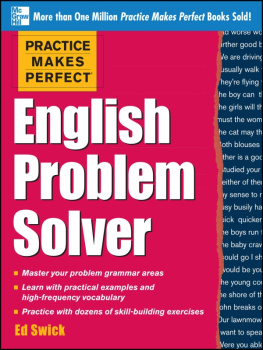
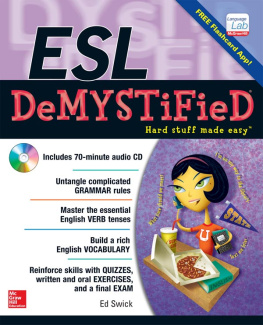


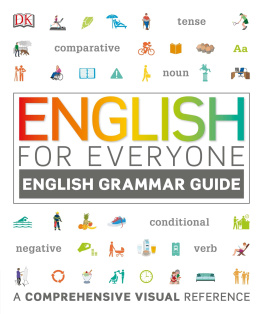
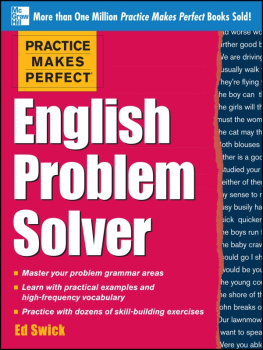

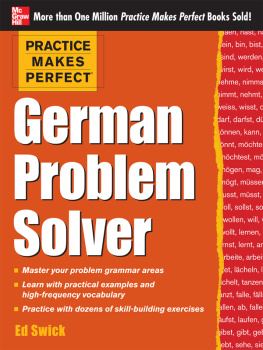
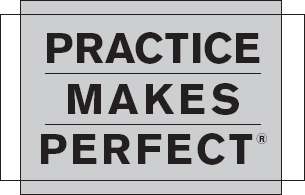



 (
(